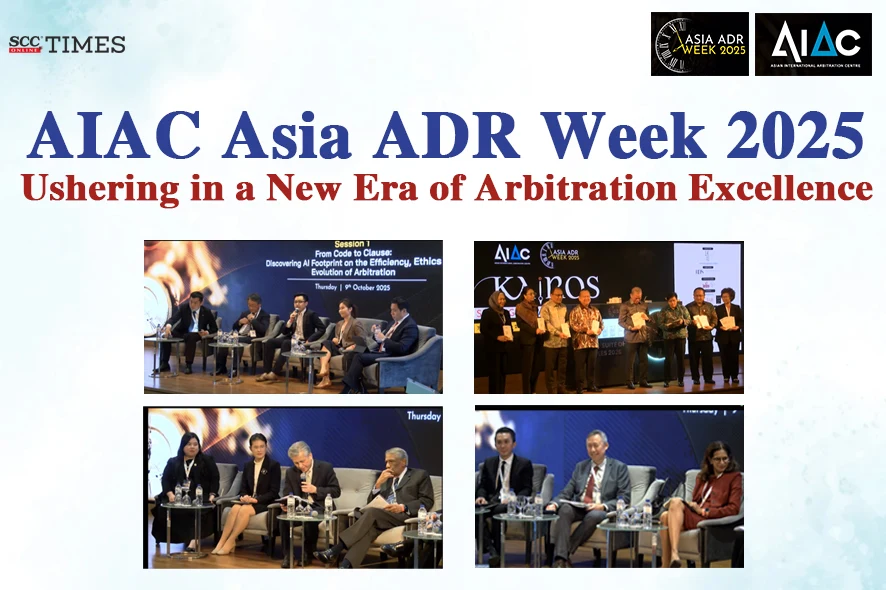The Asian International Arbitration Centre (AIAC) successfully hosted the official launch of the seventh edition of Asia ADR Week 2025 on 9-10-2025, at its historic headquarters, Bangunan Sulaiman, in Kuala Lumpur, Malaysia. This year’s edition carries the compelling theme, “Kairos: Seizing the ADR Moment,” encapsulating the urgency and opportunity in transforming the future of dispute resolution.
As AIAC’s annual flagship event, Asia ADR Week has long been recognised as a premier platform for the global alternative dispute resolution (ADR) community. The 2025 edition continues this legacy, welcoming a distinguished gathering of international and local judges, legal practitioners, academics, in-house counsel, government officials, and ADR experts.
The week-long programme, running from 7th to 11th October 2025, officially commenced on 9 October with a grand opening ceremony that set a momentous tone for the days ahead. With over 60 renowned speakers and a diverse agenda covering the most pressing issues and emerging trends in ADR, Asia ADR Week 2025 stands as a powerful testament to AIAC’s leadership in the field and Malaysia’s growing influence in the global legal arena.
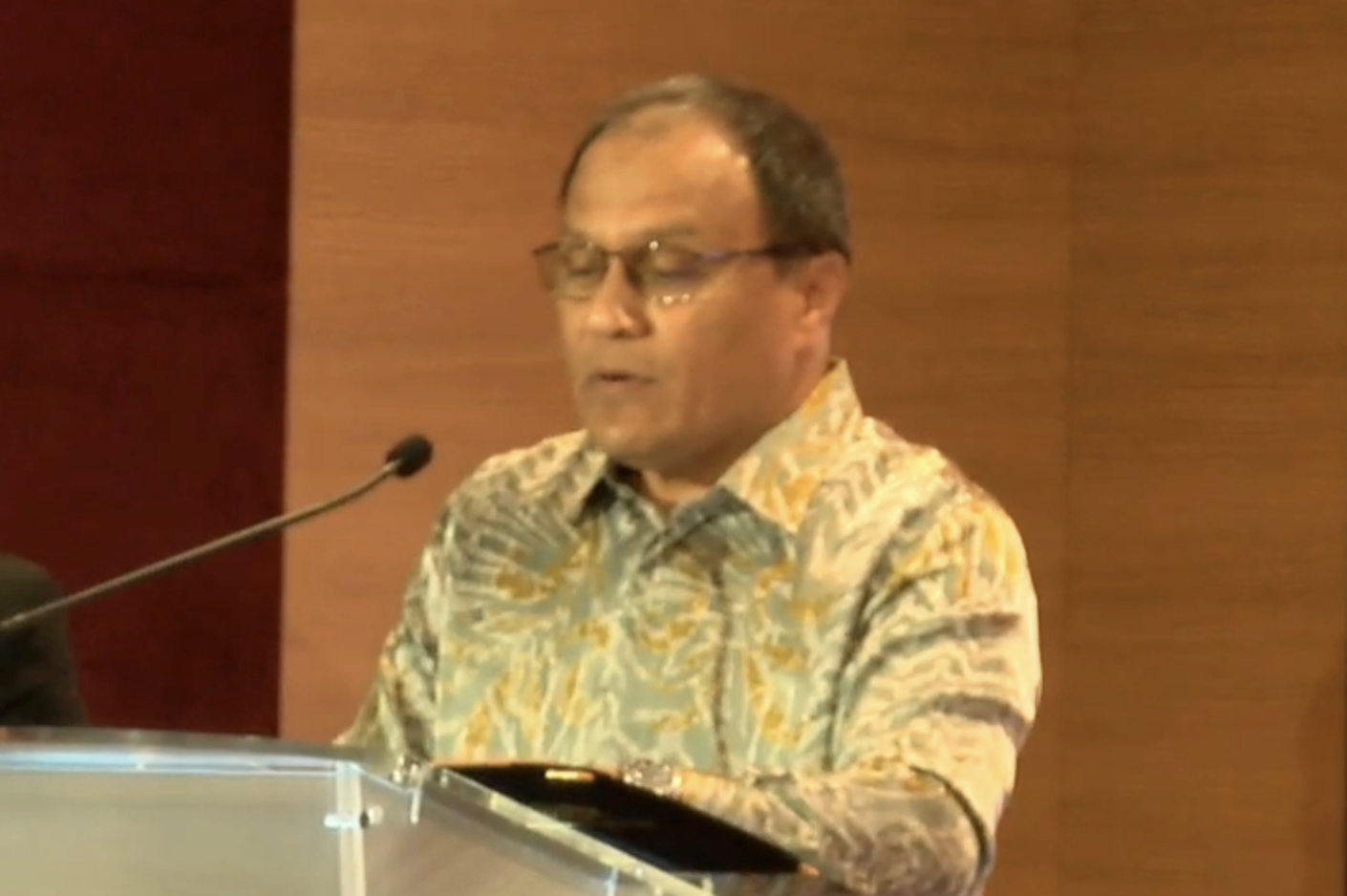
The event commenced with a warm welcome address delivered by YBhg. Tan Sri Mohd. Dusuki bin Mokhtar, Chairman of the AIAC Board of Directors and Attorney General of Malaysia.
In his opening, Tan Sri Dusuki warmly welcomed guests and set the tone for the conference by introducing the powerful theme: “Kairos: Seizing the ADR Moment.”
He said that for the first time, the AIAC had conducted an ambitious national initiative titled “The Road to Kairos”, a multi-city roadshow across five Malaysian regions. This initiative, held as a prelude to Asia ADR Week, aimed to decentralise engagement and make ADR more accessible to local communities.
Tan Sri Dusuki highlighted that these efforts marked the beginning of a broader mission: to ensure that ADR becomes a truly national pursuit. He emphasised that for ADR to flourish, it must be accessible to every region, every community, and every sector, calling on the AIAC to continue its proactive approach in reaching communities beyond the capital.
Turning to the theme, he explained that “Kairos” is derived from ancient Greek, meaning the ‘opportune moment’, a decisive point in time when action has the potential to shape the future. He urged the audience to seize this moment to drive transformation in ADR, especially as the dispute resolution landscape evolves at an unprecedented pace.
Tan Sri Dusuki reflected on AIAC’s proud heritage, while honouring the Centre’s legacy. He emphasised that AIAC is also firmly focused on the future. He outlined the Centre’s ongoing institutional reforms, including the establishment of the AIAC Court of Arbitration and the official launch of the AIAC Suite of Rules 2026. These landmark developments coincide with anticipated amendments to the Malaysian Arbitration Act 2005 and the Construction Industry Payment and Adjudication Act (CIPAA) 2012, setting the stage for a more dynamic and responsive ADR framework.
He closed the address by inviting all participants to engage meaningfully with the sessions ahead, draw inspiration from the discussions, and collectively contribute to the advancement of the global ADR ecosystem.
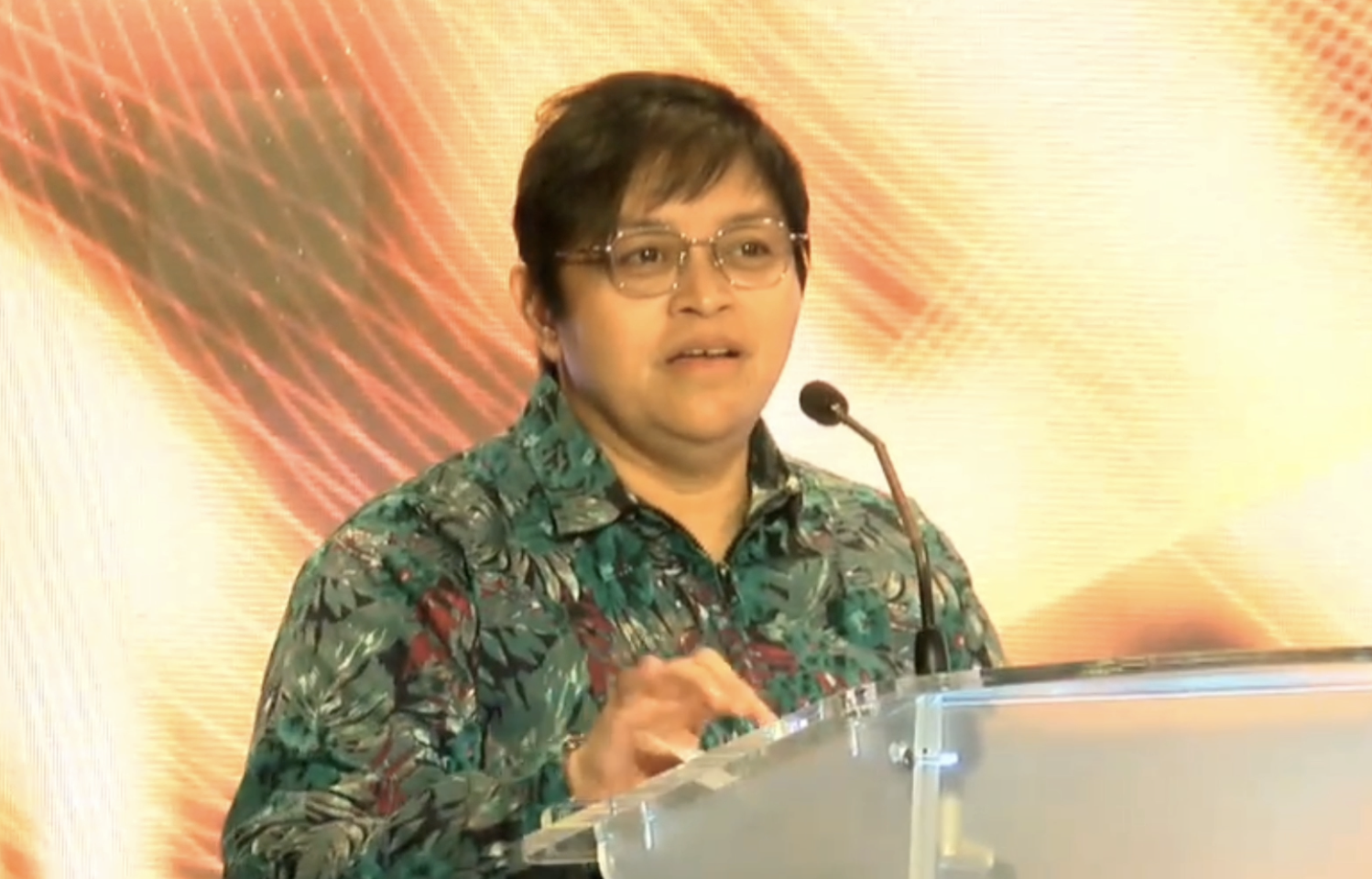
This was followed by Special Remarks from YB Dato’ Sri Azalina Othman Said, Minister in the Prime Minister’s Department (Law and Institutional Reform), Malaysia, reflecting on the transformative journey of the AIAC and Malaysia’s leadership in ADR.
Dato’ Sri Azalina highlighted the AIAC’s remarkable year of progress, citing milestones such as the formalisation of new collaborations, signing of MOUs, and the launch of several innovative initiatives. These, she noted, demonstrated AIAC’s unwavering commitment to expanding access to justice and legal education across the region.
Reflecting on the AIAC’s institutional reform journey, which began in February 2024, the Minister acknowledged the challenges and time required for meaningful transformation. Yet, she affirmed that the Centre had now reached a historic milestone with the launch of the AIAC Suite of Rules 2026, a product of visionary objectives, expert insight, industry best practices, and global standards. The new Rules, she said, set a clear trajectory for the future of ADR in Malaysia and beyond.
Dato’ Sri Azalina also celebrated the impending establishment of the AIAC Court of Arbitration, calling it a benchmark for excellence and a symbol of AIAC’s aspirations for global leadership.
Acknowledging the broader regional impact, she noted Malaysia’s success in bringing together ASEAN member states during the ASEAN Law Forum, which resulted in a joint statement on international arbitration and mediation development. She described this as a testament to regional unity and Malaysia’s commitment to building a rule-based, dynamic legal ecosystem that supports economic growth and sustainability.
From a domestic lens, she reiterated the need to embed ADR practices across all sectors, making it a default path to resolve disputes efficiently and fairly.
As AIAC approached its 50th anniversary, she said, it remained a torchbearer for ADR reform and excellence, not just in Malaysia but across the Asia-Pacific region. She urged all stakeholders to work together to elevate the institution and ensure that Asia becomes recognised as the next global ADR hub.
The Special Remarks concluded on an inspiring note: “The time is right, and the opportunity is ours to seize. Let us empower our institutions, elevate standards, and shape a future where Malaysia stands as a champion of just, efficient, and inclusive dispute resolution.”
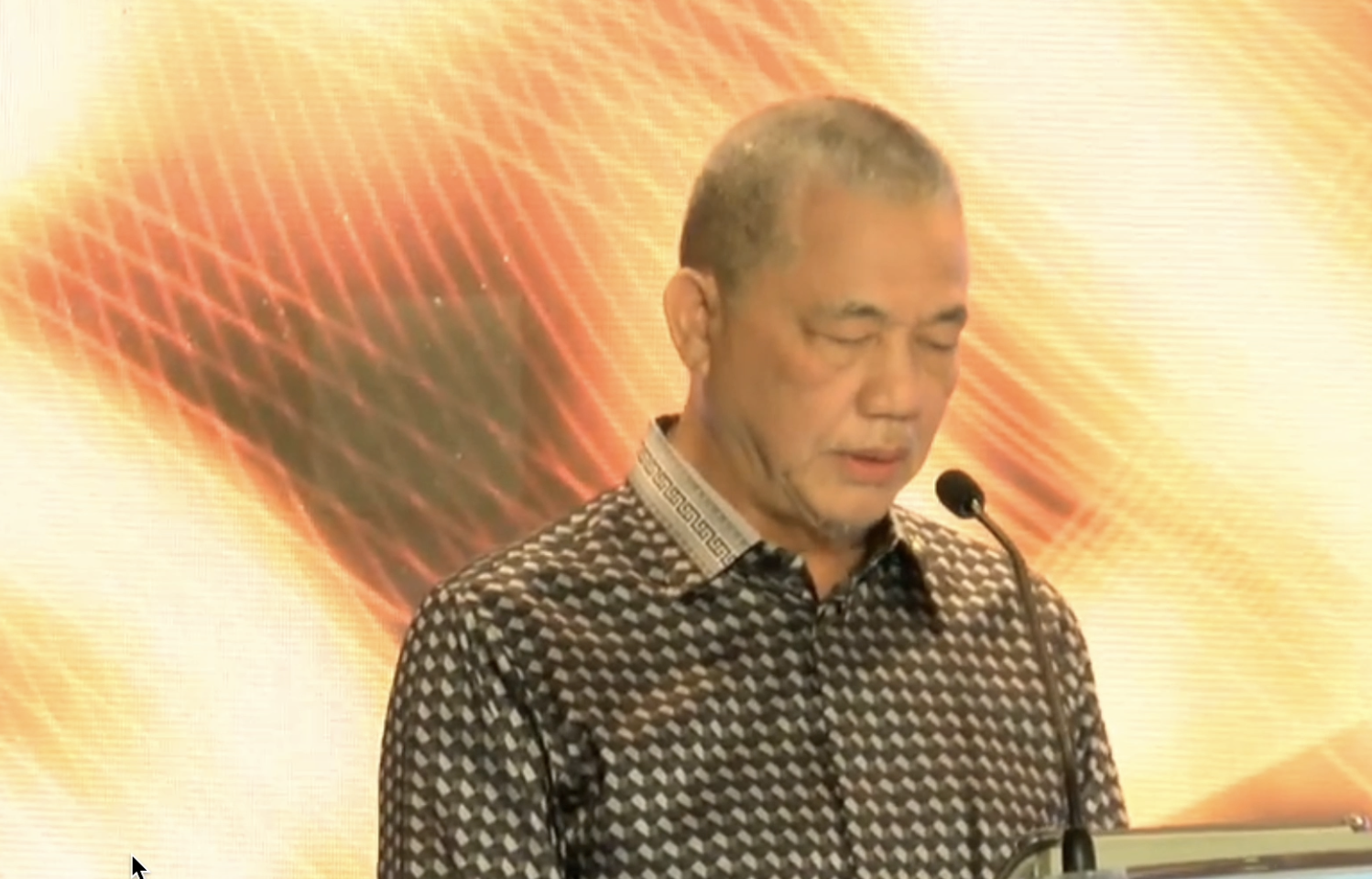
The ceremony was further elevated by the Executive Address delivered by YAB Dato’ Sri Haji Fadillah bin Haji Yusof, Deputy Prime Minister and Minister of Energy Transition and Water Transformation, Malaysia. His address focused at a pivotal juncture in the ADR landscape, capturing the essence of Khairos—a moment of convergence for vision, leadership, and conviction.
He emphasised that ADR is more than just a settlement mechanism; it is a philosophy promoting peace, balance, and understanding in a world often defined by conflict. Reflecting on Malaysia’s diversity, he noted that the country’s ability to harmonize differences through ADR was its greatest strength. The country’s strategic location, legal reforms, and multicultural community were highlighted as key enablers in positioning Malaysia as a neutral and credible global hub for ADR.
“As Mahatma Gandhi once said, peace is not the absence of conflict, but the ability to cope with it by peaceful means. ADR gives that ability form, structure and purpose, transforming disputes into dialogue and friction into progress. Across Asia and beyond, we are witnessing a profound transformation in the way disputes are resolved.”
He also praised the launch of the AISC Suite of Rules 2026 and the establishment of the AISC Court of Arbitration, which marked a new era of institutional independence and procedural excellence. These reforms aimed to enhance Malaysia’s standing in the global ADR community, further establishing it as a leader in the field.
“Neutrality, integrity, and credibility have become the defining benchmarks for trusted arbitration. In embracing this evolution, the AAC’s institutional reform journey reaffirms its commitment to the highest standards of neutrality, transparency, independence and, above all, excellence. So, I commend the AISC for steering this transformation with vision and resolve.”.
The launch of the AIAC Suite of Rules 2026
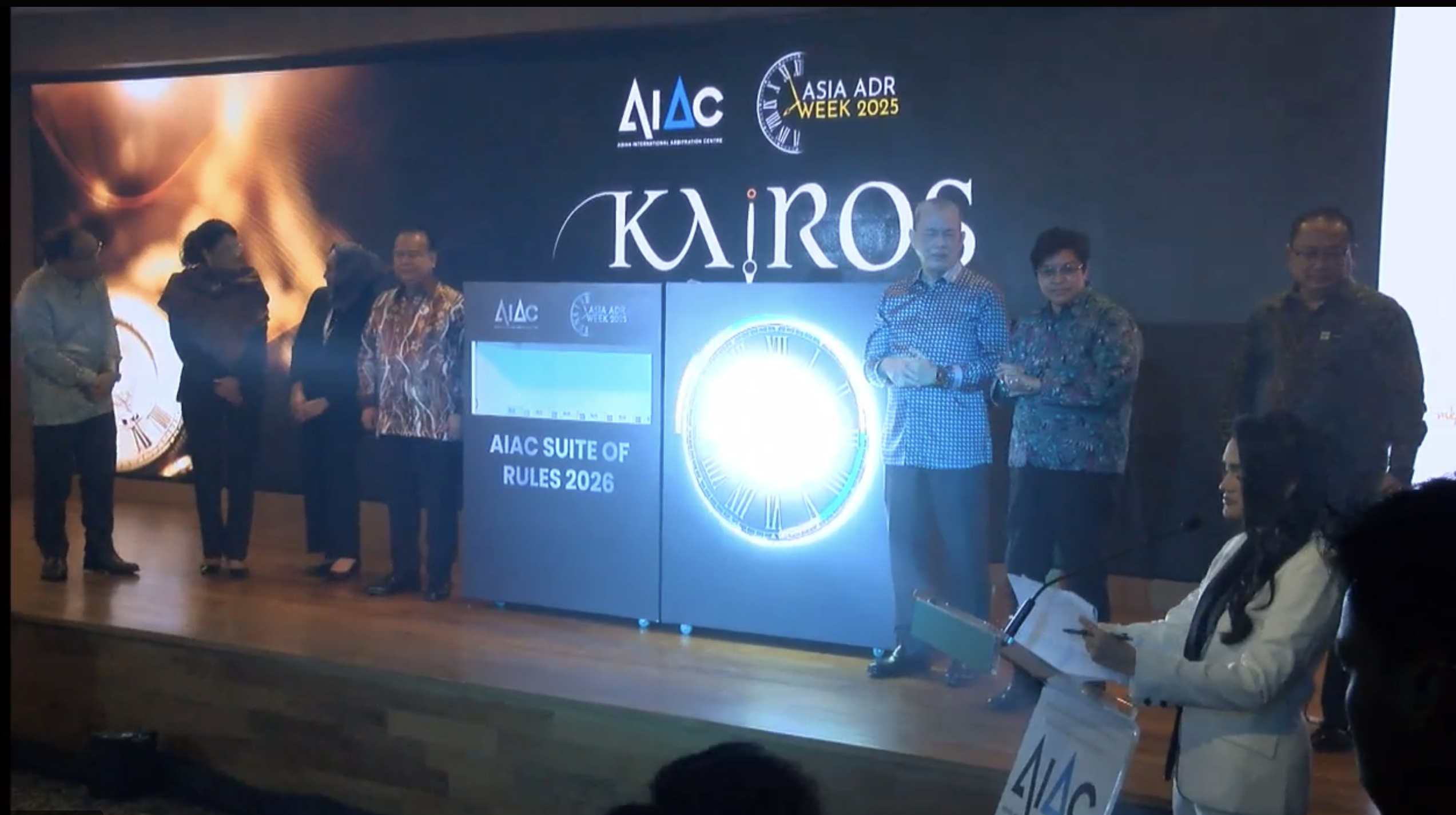
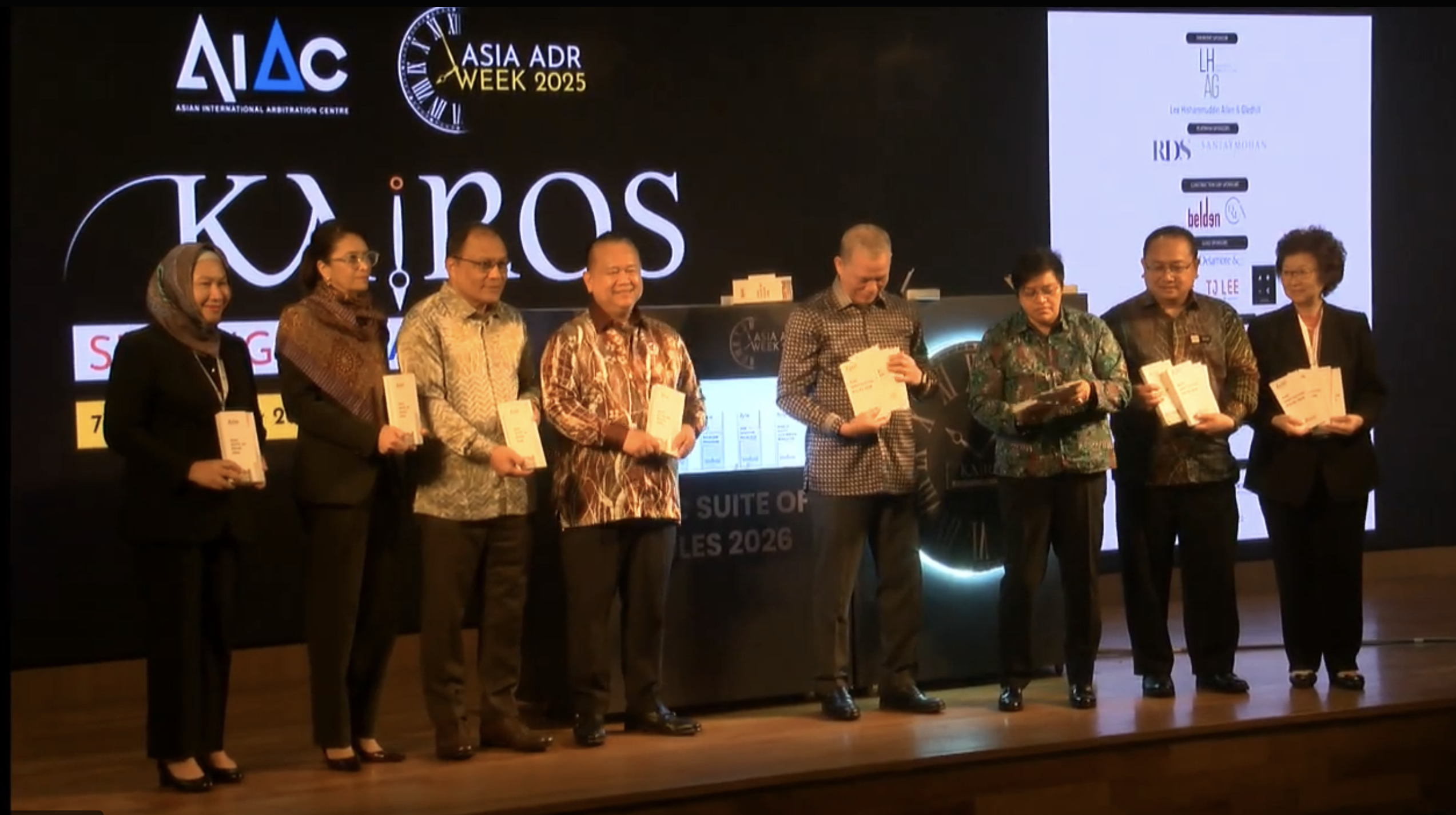
Session 1 – From Code to Clause: Discovering AI Footprint on the Efficiency, Ethics and Evolution of Arbitration
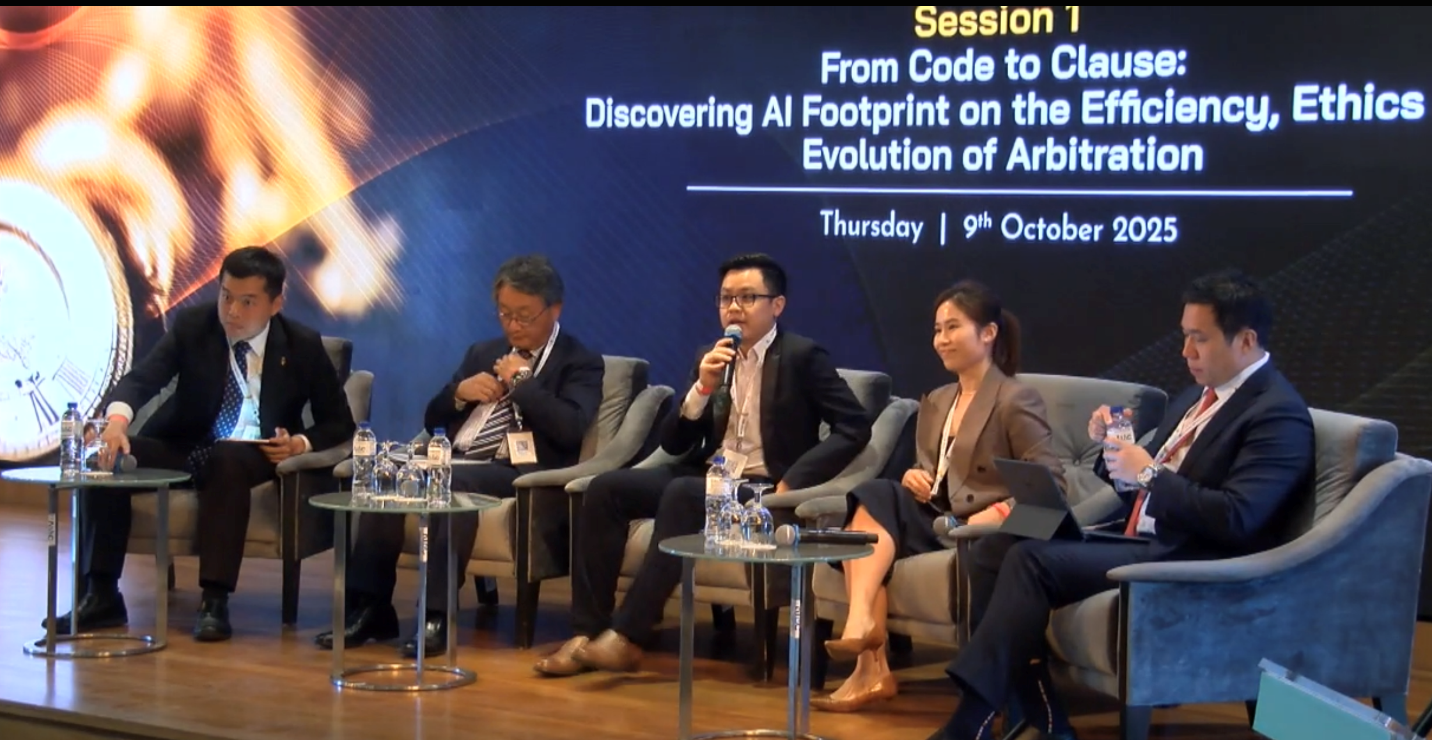
Session Overview
The first session of Asia ADR Week 2025, titled “From Code to Clause: Discovering AI’s Footprint on the Efficiency, Ethics, and Evolution of Arbitration”, delved into the transformative role of Artificial Intelligence (AI) in the field of international arbitration. As arbitration increasingly becomes a preferred method for resolving cross-border commercial and investment disputes, the integration of disruptive technologies such as AI offers a significant opportunity to enhance the efficiency, ethics, and evolution of the process.
This engaging session explored the regional and international prospects of AI in arbitration, focusing on the impact of advanced algorithms in analysing vast amounts of data, administering arbitrations, and setting new standards within the field. The panelists shared practical insights and real-world case precedents, discussing the common AI tools that are already being utilized by lawyers and other stakeholders involved in international disputes. Furthermore, the session looked forward to strategies for the responsible use of AI in arbitration, emphasizing the importance of ethical considerations and regulatory frameworks.
The session was moderated by Mr. Kenny Lam, Partner at Rosli Dahlan Saravana Partnership, who guided the discussion with thought-provoking questions and engaged the panelists and audience in a dynamic exchange of ideas.
Panelists:
-
Mr. David Kim, Partner at Baker McKenzie, Seoul
-
Mr. Hiroyuki Tezuka, Partner at Nishimura & Asahi (GKJ), Tokyo
-
Mr. Lim Chee Yong, Partner at Lee Hishammuddin, Allen & Gledhill
-
Ms. Stephanie Siu, Senior Legal Solutions Manager (Legal Tech & Content), APAC, Thomson Reuters
Ms. Stephanie Siu’s Insights: The Current State of AI in Arbitration
Ms. Stephanie Siu began the session by outlining the present state of AI within the arbitration space. She emphasised that the use of AI could be broadly categorized into established and emerging applications. The established areas included:
-
Hearing technology such as AI-powered translation and transcription tools.
-
AI-assisted research, enabling quicker and more efficient retrieval of relevant legal information.
Ms. Siu then highlighted the newer, up-and-coming applications of AI, particularly the integration of AI within arbitration institutions. These advancements include:
-
AI in case management systems, designed to expedite case processing and improve the retrieval of case-related information.
-
Document analytics, where AI can analyse large volumes of case documents, summarize cases, and even assist in drafting arbitration awards.
While these newer areas offer exciting possibilities, Ms. Siu acknowledged the debate around the appropriate applications of AI in arbitration, particularly regarding the ethical and procedural implications.
Mr. Lim Chee Yong’s Perspective: Practical Use of AI in Construction Arbitration
Following Ms. Siu’s presentation, Mr. Lim Chee Yong shared his observations regarding the use of AI in the context of construction arbitration. He noted that AI adoption was still in its early stages but was already having a significant impact behind the scenes. Mr. Lim’s primary focus was on the document review and case preparation processes in construction arbitration, which involve dealing with vast amounts of documents such as contracts and technical drawings.
He highlighted the following key benefits of AI adoption:
-
Document review automation, which dramatically reduces the time needed to produce detailed summaries or chronologies of cases. Tasks that once took junior lawyers or paralegals weeks or even months could now be completed within hours or even minutes, depending on the volume of data.
-
Resource allocation: AI’s ability to streamline document management and case analysis allowed teams to shift their focus towards higher-value tasks, thus enhancing overall efficiency.
Mr. Lim further elaborated on how AI can provide great advantages in the international dispute context, where clients often provide large volumes of documents. By leveraging AI, legal professionals could expedite the processing of these documents, allowing for faster and more accurate case preparations.
David Kim’s Insights: The Rise of AI in Arbitration
David Kim, a seasoned practitioner in international arbitration, shared his thoughts on the rapid rise of AI and its potential to reshape the arbitration landscape. He began by expressing his hesitance to speak on such a fast-evolving topic, acknowledging the challenge of discussing AI when its development is changing on a day-to-day or week-to-week basis. He used the example of the internet’s rise in the late 90s to emphasise the unpredictability of technological advancements, recalling how people back then could not have foreseen the vast changes that the internet would bring to the legal field.
Kim suggested that AI, in its current form, could be seen as a paralegal-level tool, but predicted that in the near future, it could evolve to a junior associate-level capability. He speculated that within a few years, AI could transform legal practice even further, making tasks such as case preparation and strategy development significantly more efficient.
In conclusion, Kim highlighted the asymmetry that AI could create in the legal field, where lawyers who adopt AI could have a substantial advantage in terms of access to information and efficiency. However, the real challenge and opportunity lie in how well practitioners can integrate AI into their practices and use it strategically
Mr. Hiroyuki Tezuka’s Insights: AI in Arbitration from an Arbitrator’s Perspective
Mr. Hiroyuki Tezuka shared his valuable insights on the evolving role of AI in arbitration, particularly from the perspective of an arbitrator. As a partner in a large law firm, Tezuka highlighted that the firm’s approach to AI is collaborative and policy-driven, with decisions being made at the firm level rather than by individuals alone. He mentioned that his firm recently published its corporate AI policy on its website, marking a significant step in its AI integration.
Turning to the specific applications of AI in dispute resolution and arbitration, Tezuka described the firm’s ongoing work with AI tool vendors. Rather than introducing a fixed, completed system, the firm takes a collaborative approach, working closely with selected vendors to continuously improve the tools. The goal is not only to enhance the tools’ capabilities but also to ensure the firm’s internal data is secure. Tezuka emphasized that vendors are not allowed to use the firm’s internal data or databases for training purposes, a critical element of the firm’s AI policy.
However, Tezuka also addressed a critical distinction between generative AI tools and the traditional deductive reasoning that arbitrators rely on for decision-making. He emphasised that generative AI operates based on probability rather than the application of legal rules to specific facts.
In summary, Tezuka’s insights shed light on the evolving role of AI in arbitration. He acknowledged the potential of AI to improve efficiency in case preparation and analysis but emphasized the importance of maintaining security and using AI tools appropriately, particularly when it comes to decision-making in arbitration. He underscored that while AI can support various aspects of arbitration, it should not replace the critical judgment and reasoning that arbitrators bring to the table.
AIAC signed a Memorandum of Understanding with Kovise Foundation Conflict Resolution International (KFCRI)
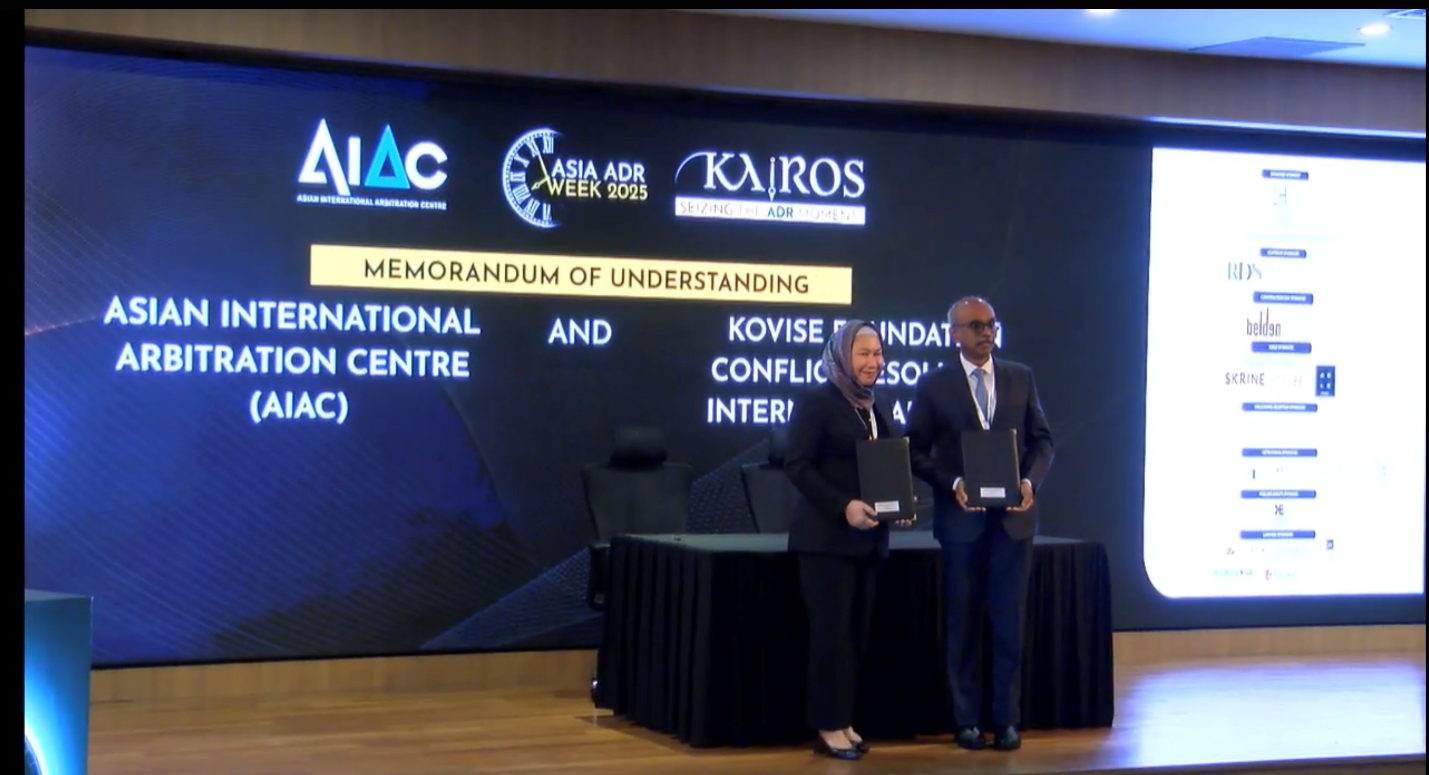
Session 2
Session 2 – Reframing ISDS: The Birth of New Language of Investment Justice
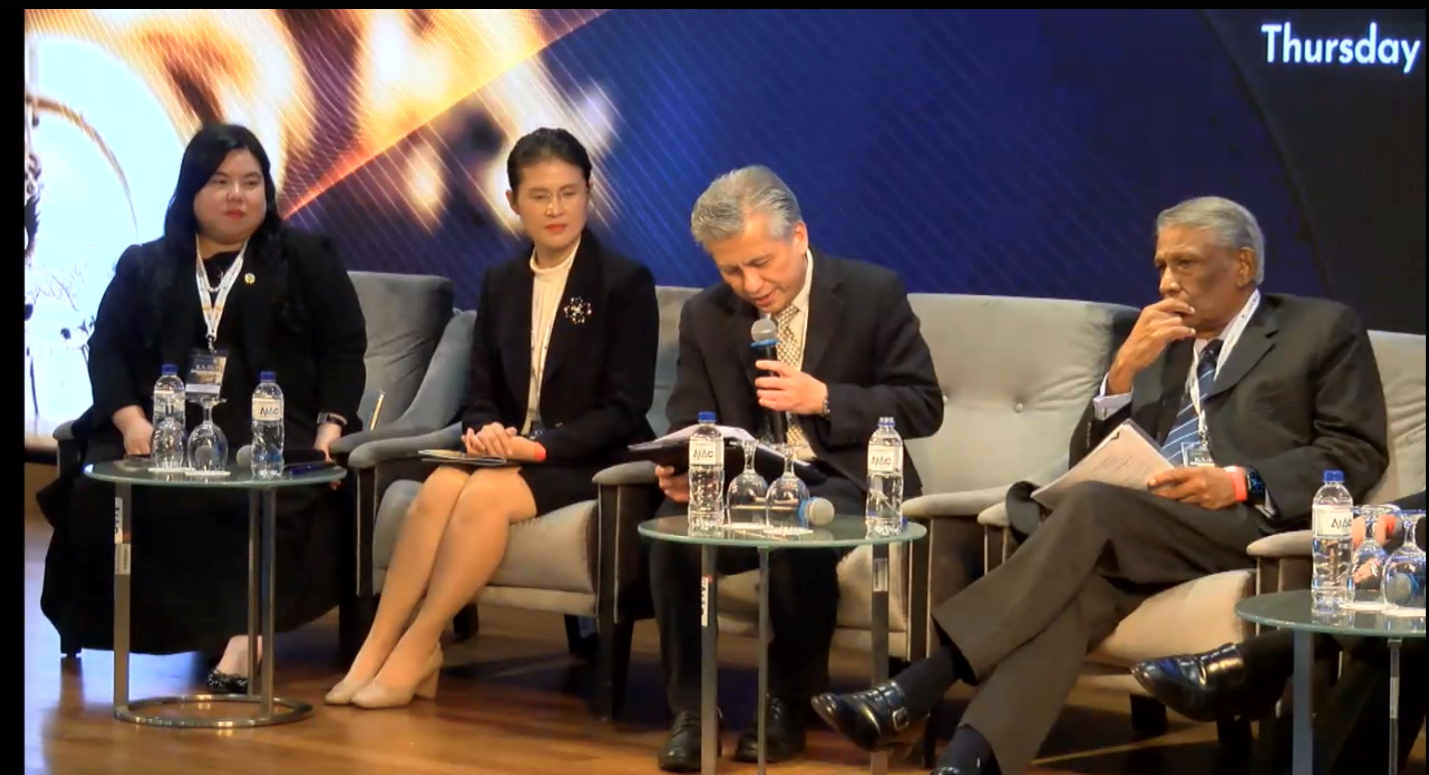
Session Overview:
This session examined the evolving legitimacy crisis surrounding investor-state dispute settlement (ISDS) mechanisms through the lens of Kairos — a moment of both opportunity and crisis. The panelists discussed the current backlashes against ISDS, including accusations of favouritism towards well-developed nations, lack of transparency and disproportionate corporate influence, which signal a pivotal turning point in the history of international investment law. This discussion delved into the evolving perception on investment arbitration and the future of resolving investment disputes — including a dialogue on how arbitral institutions such as the AIAC are well-equipped to handle investment disputes.
The session was moderated by Mr. Khoo Guan Huat, Partner at Khoo Chambers, who steered the conversation around the key issues affecting ISDS today.
Panelists:
-
Tan Sri Dato’ Cecil W.M. Abraham, Senior Partner, Cecil Abraham & Partners
-
Professor Cheng Lu TJ Lee, Advocates and Solicitors
-
Professor Dr. Colin Ong KC, Senior Partner, Dr. Colin Ong Legal Services
-
Ms. Sharon Chong Tze Ying, Partner, Skrine
-
Dr. Vanina Sucharitkul, Partner, Rajah & Tann Asia
Opening Remarks by Mr. Khoo Guan Huat:
Mr. Khoo began the session by introducing the topic of ISDS and the growing criticisms that have emerged in recent years. He noted that concerns surrounding the lack of transparency, accountability, and the potential for ISDS to limit the sovereignty of states have been widely discussed.
Tan Sri Dato’ Cecil W.M. Abraham’s Critique:
Tan Sri Dato’ Cecil W.M. Abraham addressed the common criticisms of investment treaty arbitration, particularly those raised by the New York Times. He highlighted several issues, including:
-
Secrecy and Lack of Transparency: Abraham noted that ISDS proceedings are often held in private, and the awards are not always fully disclosed. While amicus briefs and public access to some awards have improved, he acknowledged that transparency in ISDS remains a contentious issue.
-
Bias Toward Investors: Abraham pointed out that there is a frequent allegation that arbitrators tend to favor foreign investors, especially when disputes involve developing countries. He suggested that the statutes of developing nations are sometimes interpreted narrowly or ignored.
-
State Sovereignty Concerns: One of the most pressing concerns, Abraham noted, is that ISDS decisions can undermine state sovereignty, particularly when states attempt to regulate areas such as public health, environmental protection, or climate change.
-
Lack of Appellate Mechanism: Abraham expressed concerns about the lack of a meaningful appeals process in ISDS. He noted that while annulment is possible, it is very limited in scope. The lack of an appellate mechanism has led to inconsistent decisions, and discussions within the European Union about creating an appellate body are ongoing.
-
Arbitrator Diversity: Another significant criticism Abraham raised was the lack of diversity among ISDS arbitrators, particularly in terms of gender, regional representation, and professional backgrounds. He pointed out that many arbitrators still come predominantly from Western countries, even though ISDS disputes increasingly involve emerging economies.
-
Enforcement Issues: Finally, Abraham discussed the enforcement of ISDS awards, noting that there have been instances where national courts have enforced ISDS awards against sovereign states, even in the face of sovereign immunity defenses. He mentioned the case of Zambia, where a court upheld an ICSID award against the state.
Dr. Vanina Sucharitkul on the Backlash Against ISDS:
Dr. Vanina Sucharitkul responded to Abraham’s points, focusing on the broader context of the backlash against ISDS. She noted that criticisms of ISDS are often periodic, and they tend to peak during high-profile cases.
Dr. Sucharitkul emphasised that while criticisms of ISDS were valid, it was important to distinguish between perceptions and the legal realities of the system. She explained that while there have been inconsistent decisions, this is largely due to the diverse nature of treaties and the individual circumstances of each case. She added that most of the time, states prevail in ISDS cases, and in instances where states recover costs; this tends to receive little media attention.
Professor Cheng Lu TJ Lee: Sovereignty and the Right to Regulate
Professor Cheng Lu TJ Lee focused on the issue of sovereignty and state sovereignty in ISDS. He agreed with Abraham and Sucharitkul that ISDS should respect a state’s right to regulate in areas that concern public health, environment, and human rights.
Lee explained that the right to regulate in the public interest, especially in areas like public health or environmental protection, is one of the key areas where ISDS has faced criticism. However, he pointed out that there have been cases where tribunals have supported state regulation, such as in the Philip Morris case, where Uruguay won the dispute related to tobacco control.
Professor Dr. Colin Ong KC: Transparency and Arbitrator Independence
Professor Dr. Colin Ong KC addressed two major concerns: transparency and the independence of arbitrators. He agreed with the criticisms regarding lack of transparency in ISDS proceedings but also pointed to the efforts being made to improve this situation, such as the publication of awards and the acceptance of amicus curiae briefs.
Professor Ong also emphasised the need to address the independence and diversity of arbitrators. He noted that despite efforts to improve diversity, the majority of ISDS arbitrators still come from Western countries, which can affect the perceived fairness of the process. He suggested that greater regional and gender diversity would help increase the credibility and acceptance of ISDS mechanisms globally.
Ms. Sharon Chong Tze Ying : Insights
Ms. Sharon Chong Tze Ying added valuable insights focused on the practical aspects of ISDS, especially concerning Asia and emerging markets. She offered a regional perspective, particularly for Asian countries, on the challenges posed by ISDS mechanisms.
Session 3
Session 3 – From Tradition to Transformation: Capturing the Court’s Kairos
Moment
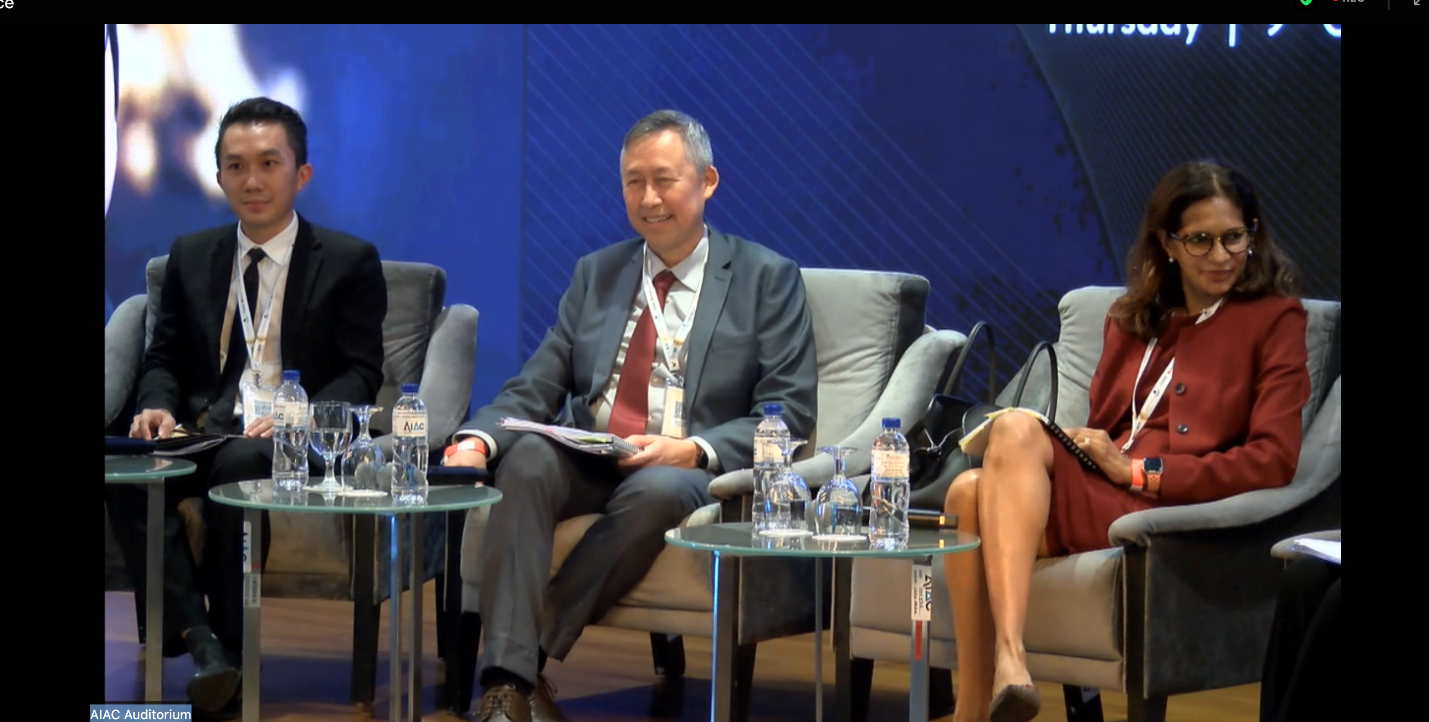
Session Overview:
In today’s increasingly interconnected global landscape, institutional courts of arbitration play a pivotal role in resolving complex and cross-border disputes. This session focused on the central role these institutions hold in offering structured frameworks and specialized guidance to bolster efficiency and integrity in arbitration proceedings. The panelists discussed how these courts not only ensure procedural effectiveness but also set best practices and industry standards, while navigating emerging challenges through innovation and reform. The session provided a comprehensive look at the evolving role of institutional arbitration in meeting the demands of a complex and rapidly changing legal environment.
The session was moderated by Dato’ Mary Lim Thiam Suan, Director, AIAC.
Panelists:
-
Ms. May Tai, Independent Arbitrator and Vice President, ICC Court of Arbitration
-
Mr. Randolph Khoo, Managing Director, Drew & Napier LLC
-
Ms. Shanti Mogan, Partner, Shearn Delamore & Co.
-
Mr. Tan Tiam Poh, Senior Associate, Lee Hishammuddin Allen & Gledhill
Ms. Shanti Mogan: Evolution of Institutional Arbitration Courts
Ms. Shanti Mogan provided her insights on how the function of institutional courts has evolved from a purely administrative role to one that encompasses a broader and more active involvement in ensuring the enforceability and effectiveness of arbitral awards.
Ms. Mogan began by reflecting on the historical role of institutional courts, which originally focused on basic administrative functions such as booking rooms, collecting fees, and providing secretarial services. These tasks were essential in maintaining the structure and procedural integrity of arbitration proceedings. She noted, however, that the role of these courts has significantly expanded over the years.
Arbitration, once perceived as a relatively straightforward process, has become increasingly complex, especially in cross-border disputes. As the landscape of international arbitration evolved, institutions began to take a more robust approach in their operations, moving beyond administrative duties to provide substantial support in ensuring the enforceability of arbitral awards. Ms. Mogan emphasised that the shift from ad hoc arbitration to institutional arbitration had brought about this transformation, with institutional courts now playing a pivotal role in overseeing the arbitration process without interfering with the merits of the substantive award.
One of the key points raised by Ms. Mogan was the increasing importance of the court of arbitration within institutional frameworks. She highlighted that institutions now bring together a diverse group of experts from across the globe, whose collective viewpoints help address complex issues such as joinder, consolidation, challenges, and scrutiny.
Concluding her remarks, Ms. Mogan pointed out that this transformation is not only a response to the growing complexity of disputes but also a necessary step for arbitration institutions to remain relevant in an increasingly interconnected global environment. The proactive and expansive approach taken by modern courts of arbitration reflects a commitment to maintaining the integrity of the arbitration process while ensuring that awards are not only fair but also effectively enforced.
Mr. Randolph Khoo’s Reflections: The Evolution of Institutional Arbitration Courts
Mr. Randolph Khoo shared his insights on the transformation of institutional arbitration courts during the session. He reflected on his initial reaction when asked about institutional courts, recalling how he had long appreciated their role as an ad hoc arbitrator. In this role, the assistance provided by such institutions in administering arbitration proceedings was invaluable. However, he acknowledged that institutional arbitration courts have evolved beyond mere administrative functions.
Building on Shanti Mogan’s earlier points, Mr. Khoo discussed how institutional courts have increasingly moved into substantive matters. In jurisdictions like Singapore, these courts now take on significant tasks such as deciding on issues of initial prima facie jurisdiction, which would previously have triggered objections under national arbitral legislation and model law. As a result, the line between the administrative functions of the court and its involvement in the merits of the case has become blurred.
Mr. Khoo pointed out that while this evolution may seem like a departure from the traditional role of institutional courts, it is a natural progression given the long history of these bodies. The London Court of International Arbitration (LCIA), for instance, has been in operation since 1891, while the International Chamber of Commerce (ICC) began in 1923, followed by other institutions such as Stockholm and China’s courts post-World War II. He took pride in noting Malaysia’s leadership in the establishment of its arbitration institution, the KLRCA, in 1978, which preceded Singapore’s establishment of its own institution in 1991.
Concluding his remarks, Mr. Khoo emphasised that institutional courts have transitioned from administrative bodies to powerful players in arbitration. They not only assist in procedural matters but are also shaping the substance and direction of international arbitration. His reflections illustrated how institutional arbitration courts are not just adapting to the times but actively leading the way toward a more responsive and efficient arbitration system.
Ms. May Tai’s Insights: The Diversity and Evolution of Institutional Arbitration Courts
Ms. May Tai shared her valuable insights into the evolution and differences between prominent arbitration institutions. She began by acknowledging the ICC’s milestone of celebrating 100 years, reflecting on how the role and function of arbitration courts have transformed over time.
Responding to the question of whether all institutional courts are the same, Ms. Tai emphasised that no, they are indeed quite different.
Ms. Tai also touched on the approach taken by the Hong Kong International Arbitration Centre, which, unlike the ICC and LCIA, does not have a formal court. Instead, it relies on various committees, such as the Appointments Committee or the Proceedings Committee, to provide assistance when needed. While this structure allows for quicker resolution of cases, she pointed out that there may be issues that go unnoticed due to the limited number of people involved in the review process.
She concluded by addressing the minimum features that all institutional arbitration courts must possess to survive in the modern landscape. Ms. Tai stressed the importance of transparency in the appointment process, diversity in membership, and regular rotation of court members. Arbitration, she noted, is constantly evolving, and it is essential for the members of these courts to represent the diverse users of the system—current and future.
Ms. Tai’s reflections underscored the varied approaches of different institutional courts while stressing the evolving and dynamic nature of arbitration. Her insights emphasised that while the structure and operations of these courts may differ, their fundamental purpose remains the same: to provide fair, efficient, and reliable dispute resolution in an increasingly complex global environment.
Mr. Tan Tiam Poh’s Contribution: Enhancing Consistency and Jurisprudence in Institutional Arbitration Courts
Mr. Tan Tiam Poh offered his perspective on the ongoing discussion regarding the evolving role of institutional arbitration courts. Mr. Tan highlighted the issue of decisions regarding consultations and joinder. He argued that leaving such decisions solely to the registrar may not always be ideal, particularly in ensuring consistency in how such issues are handled across cases. Mr. Tan emphasised that the involvement of a separate body to specifically address these “substantive-administrative” issues would foster consistency and allow the institution to develop a clearer body of jurisprudence in this area.
He pointed out that creating a distinct mechanism within the institution to handle such matters could not only ensure uniformity but also contribute to the development of institutional jurisprudence, providing a clearer, more reliable approach to how these issues, such as consultations and joinder, should be treated across different cases. This, in turn, would enhance the credibility and effectiveness of the institution as a whole, benefiting both the users of the system and the institution’s long-term development.
Mr. Tan’s insights underscored the need for arbitration institutions to evolve not just in their procedural efficiency, but also in their ability to build a cohesive and consistent body of decisions that could guide future arbitration practices.
Session 4
(Fireside Chat) Sanctions, Sovereignty and Settlement:Navigating Disputes in an Era of Global Fracture
Session Overview:
In the face of escalating geopolitical tensions and an increasingly fractured global order, sanctions have emerged as a significant tool to pressure states into compliance with international legal obligations and deter further breaches of international agreements. This session explored the evolving role of sanctions and their impact on international disputes, particularly in the context of arbitration proceedings and the growing relevance of mediation as a potential solution. The fireside chat also addressed the challenges faced by sanctioned parties in initiating or defending legal actions, along with the practical and administrative implications of sanctions on the arbitration process.
The session was moderated by Mr. William Lim Wee Chong, Founding Partner of Ariff Rozhan & Co.
Panelists
-
Mr. Artie McConnell, Partner at BakerHostetler, USA
-
Mr. Khurram Pirzada, Partner at KPMG
-
Ms. Lim Koon Huan, Partner at Skrine
-
Mr. Sudharsanan Thillainathan, Partner at Adnan Sundra & Low
Artie McConnell on the Extra-Territorial Reach of U.S. Sanctions
In this engaging fireside chat, Mr. William Lim Wee Chong started a thought-provoking conversation with Mr. Artie McConnell on how sanctions are reshaping the global landscape of dispute resolution.
The discussion started with Mr. Lim’s opening question on the far-reaching impacts of sanctions on cross-border transactions. Specifically, he asked, “Why should entities outside the US jurisdiction comply with US sanctions?”
Mr. McConnell explained that the US sanctions regime has evolved significantly in recent years. Originally a tool of US foreign policy, sanctions now have extra-territorial reach, impacting entities around the globe. He emphasized that any transaction that touches the US financial system, whether it involves US-origin goods, technology, or even just the use of the US dollar, can trigger US sanctions.
He highlighted that even if the transaction occurs entirely outside the United States, the involvement of US persons or the use of the US banking system, such as clearing US dollar payments through correspondent banks, can activate sanctions. This can have serious consequences for foreign businesses, which may find their assets blocked or their ability to transact in US dollars severely restricted.
He also introduced the concept of secondary sanctions, which are imposed on foreign entities that engage in business with sanctioned countries or individuals. This extra layer of enforcement makes US sanctions especially powerful because secondary sanctions can sometimes do more damage to a company’s operations than losing direct trade with a sanctioned entity. In this context, Mr. McConnell cited an example from Malaysia, where some companies faced secondary sanctions due to their business dealings with Russian entities, even though those transactions had no direct connection to the United States.
He wrapped up his commentary by stating that, regardless of one’s stance on the legitimacy of US sanctions, the reality for businesses today is that they are forced to factor them into their strategies, as failure to comply can have catastrophic consequences.
Mr. Sudharsanan Thillainathan: Navigating the Collision of Contract Law and Sanctions:
In this insightful session, Mr. Sudharsanan Thillainathan shared his perspectives on the impact of sanctions on contractual relationships, drawing from his experience as a litigator.
Mr. Thillainathan began by acknowledging that, prior to this session, his understanding of sanctions was minimal, as sanctions law is not a significant area of focus for many Malaysian practitioners. He explained that Malaysia, unlike jurisdictions like the US, Singapore, or Hong Kong, does not impose its own sanctions. Instead, it adopts UN sanctions. While Malaysia is not heavily impacted by sanctions, the changing dynamics in other regions, especially in the courts of Singapore and Hong Kong, now make this a critical issue that local lawyers need to engage with.
He emphasised that sanctions are not a new phenomenon. They have been a tool of international law for quite some time and are not solely the domain of the Trump administration. Mr. Thillainathan noted that the current enforcement policies, particularly with regard to sanctions, have evolved over time and now are a much more significant consideration in cross-border transactions.
Mr. Thillainathan then discussed the possible legal consequences of failing to comply with sanctions, noting that while sanctions are generally designed to restrict trade and finance with specific entities, parties who fail to perform contracts due to sanctions could be exposed to civil liability. However, statutory protections exist under US, UK, and EU sanctions laws to shield companies that act in compliance with the sanctions regime, provided they can demonstrate a reasonable belief that their actions comply with the sanctions.
The challenge for lawyers, he explained, is understanding how to balance contract law with criminal law. If sanctions prevent the performance of a contract and no license is obtained, the question becomes whether the contract is illegal or if it is frustrated. These issues require careful analysis, as force majeure clauses may or may not cover such scenarios, depending on the contractual language and local law.
To conclude, Mr. Thillainathan emphasised the collision between contract law and criminal law when sanctions impact contracts. While it is possible to use force majeure or statutory protections to avoid liability, the evolving nature of sanctions laws means that businesses and legal practitioners must remain vigilant and proactive in understanding their legal obligations and rights.
Ms. Lim began her contribution by acknowledging that there were no notable Malaysian cases on sanctions to reference, highlighting the absence of judicial precedent on the matter in Malaysia. She pointed out, however, that neighboring Singapore has seen cases where contracts became unperformable due to sanctions. This legal development in Singapore signals that similar issues may soon arise in Malaysia, and practitioners must begin preparing for the potential legal challenges that sanctions could bring.
Ms. Lim stressed the need for Malaysian legal practitioners to pay attention to sanctions law, noting that it is likely to become a more pressing issue in the near future. She emphasised that it’s not just about how to represent clients, but also about understanding the broader implications for lawyers, particularly when one’s client is a sanctioned party. She raised important questions about whether practitioners could act for a sanctioned party, and if so, how they might be impacted legally.
She acknowledged that while there is no prohibition on acting for sanctioned parties in Malaysia, there are significant secondary considerations to be addressed. These include reputational risks, particularly when representing entities from countries like Russia, which is currently subject to widespread sanctions. She highlighted that lawyers could face negative publicity for working with sanctioned entities, particularly in politically sensitive situations.
Ms. Lim concluded her points by underscoring that while there is no outright legal barrier to representing sanctioned clients in Malaysia, legal practitioners must ensure compliance with both local and international sanctions. She highlighted the need for practitioners to carefully consider the implications of acting for sanctioned parties, not just from a legal standpoint, but also in terms of financial viability and professional ethics.
The session continued with Mr. Khurram Pirzada, Partner at KPMG a former banker, offering his perspective on the challenges and complexities posed by sanctions, particularly from a financial and compliance standpoint.
Mr. Khurram explained that in financial institutions, the default response to any potential involvement with a sanctioned party was to avoid it altogether.
He noted that compliance departments, whether explicitly outlined in procedures or not, tend to adopt a strict “no” stance when it comes to sanctioned entities. This risk aversion stems from the complex regulatory landscape surrounding sanctions and the severe penalties that could arise from inadvertently violating them.
Sanctions, Mr. Khurram explained, are a non-violent tool used by countries to exert pressure on other nations or entities without resorting to war. He emphasized that while sanctions themselves are not new, their widespread impact on global transactions and financial systems has created new challenges for countries, businesses, and individuals in the sanctioned regions.
He elaborated that the imposition of sanctions essentially blocks access to legitimate financial systems and creates barriers for entities to arrange payments, which often results in the use of alternative channels.
To circumvent the challenges posed by sanctions, many entities in sanctioned regions have resorted to using alternative, often informal, payment systems. Mr. Khurram highlighted the use of the Hawala system, a traditional, informal money transfer system that operates without the oversight of formal banking institutions. This system is especially prevalent in parts of the Middle East and provides a mechanism for parties to send money across borders without detection by financial regulators.
The Hawala system, Mr. Khurram explained, functions as an underground banking arrangement where individuals or businesses can facilitate cross-border transactions without relying on conventional banks. This method allows payments to be made in any currency and is often employed in sanctioned countries to avoid the restrictions imposed by global financial systems.
While the system may be effective for sanctioned entities, it comes with significant risks, as it can be used to facilitate illicit activities such as money laundering and smuggling.
Mr. Khurram concluded by reaffirming the significant difficulties faced by individuals, entities, and entire countries under sanctions. These challenges include the inability to access legitimate financial systems and the increasing reliance on informal and underground financial channels. While these alternative methods may provide a workaround for sanctioned entities, they also contribute to the rise in criminal activities, such as smuggling and money laundering, which further complicates the global financial landscape.
Conclusion
As the AIAC Asia ADR Week 2025 Day 1 draws to a close, the discussions throughout the sessions have underscored the transformative role arbitration and dispute resolution mechanisms play in an increasingly complex global landscape. From the evolving impact of sanctions to the challenges and opportunities arising from new legal frameworks, the insights shared by industry leaders have illuminated the path forward for practitioners, businesses, and policymakers alike.
The AIAC Asia ADR Week 2025 has not only provided a platform for thought leadership but has also reinforced the importance of staying agile and informed in this rapidly evolving field.



